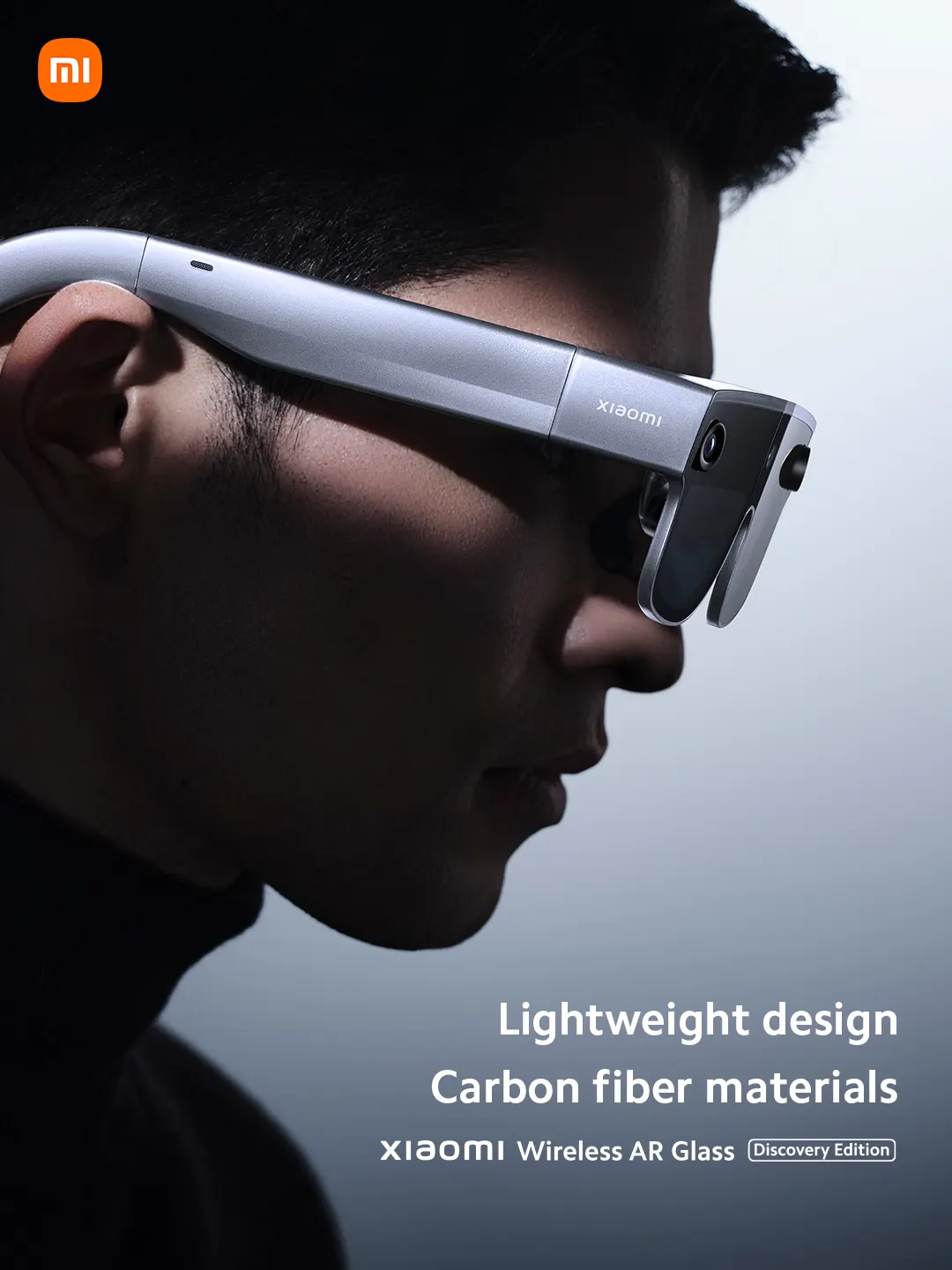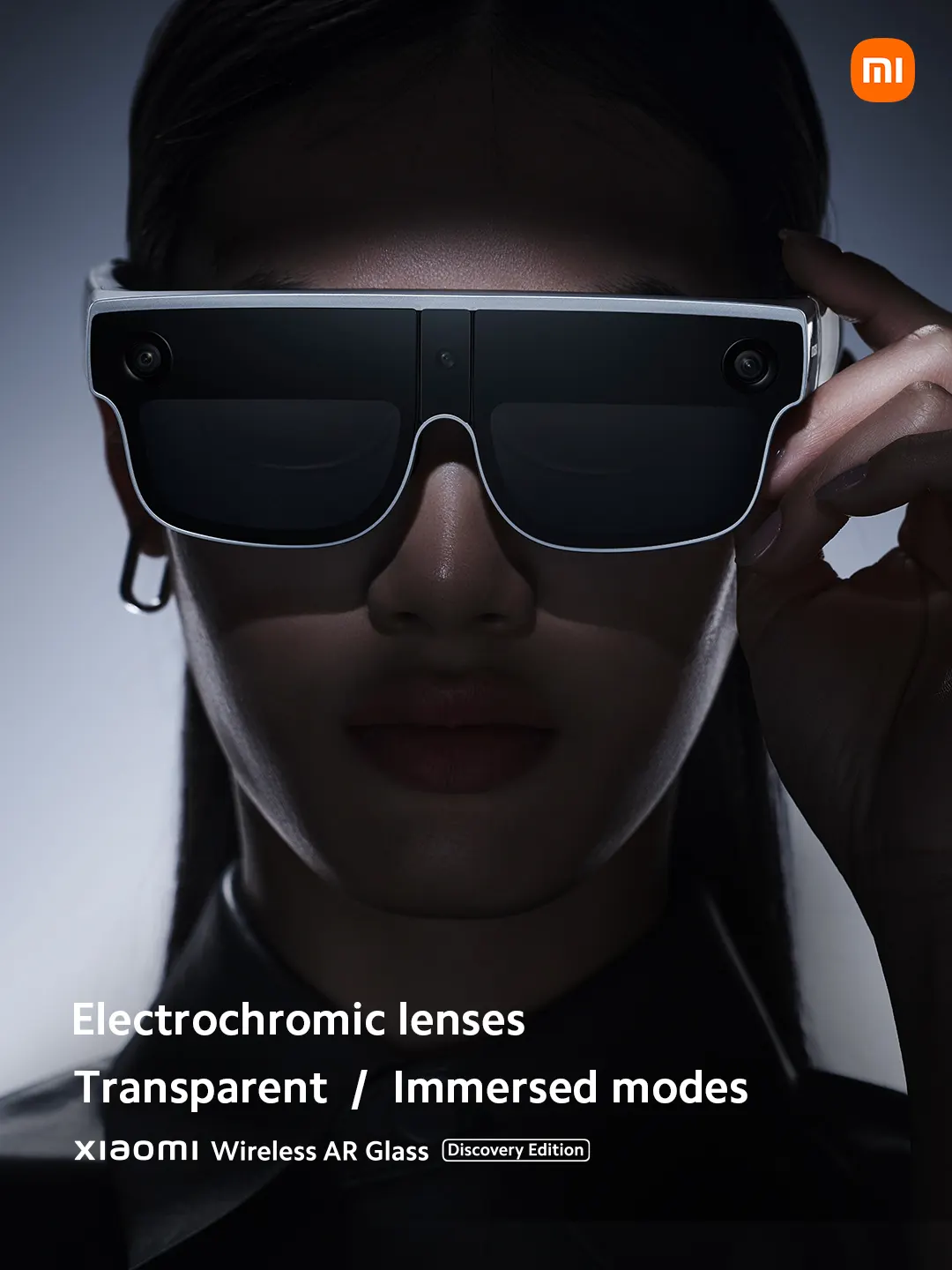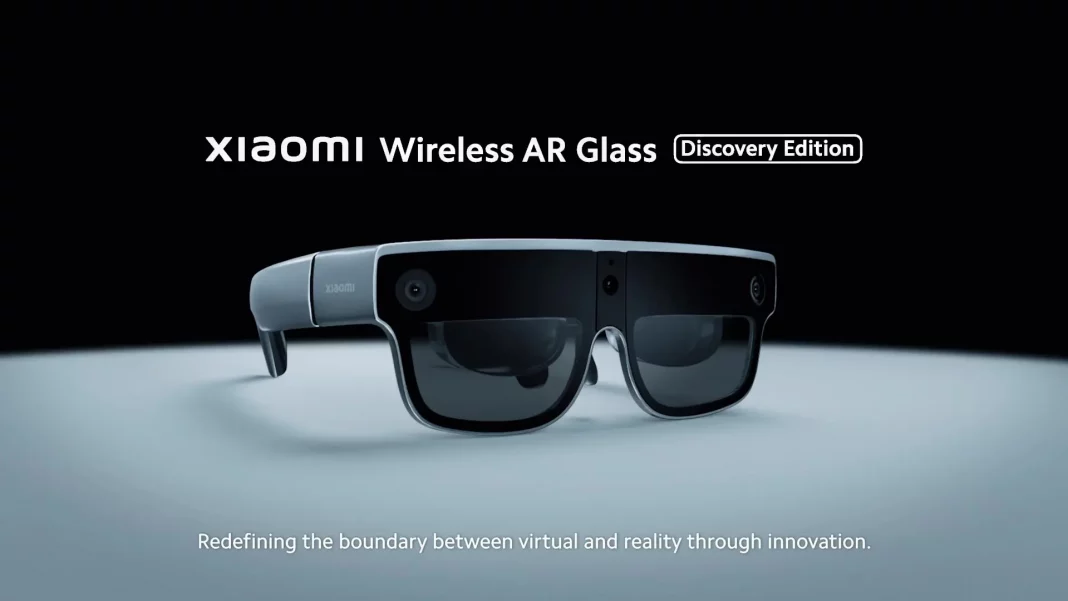Xiaomi, the global leader in consumer electronics and smart devices, unveiled a groundbreaking development at MWC in Barcelona , the Xiaomi Wireless AR Smart Glass Discovery Edition. The latest technological innovation paves the way for wireless AR devices.

Xiaomi, the global leader in consumer electronics and smart devices, unveiled a groundbreaking development at MWC in Barcelona, the Xiaomi Wireless AR Smart Glass Discovery Edition. The cutting-edge innovation is Xiaomi's first wireless AR (augmented reality) glasses, which rely on IoT to offer a retina display that also adapts to ambient light conditions. The device connects to a Snapdragon Spaces-enabled smartphone, tracks hand gestures in a sophisticated way, supports a range of apps to help you see the larger surface, and offers several forward-thinking innovations to create interoperability between devices.
Wireless AR glasses, latency-free display
Xiaomi Wireless AR Smart Glass Discovery Edition smart glasses are designed with the best possible personalised user experience in mind. Weighing just 126 grams, the AR glasses connect to your smartphone not by wire, but via a bus system developed by Xiaomi - using high-speed wireless technology. The device uses the Snapdragon® XR2 Gen 1 Platform and Xiaomi's proprietary low-latency communication channel. The Snapdragon Spaces™ XR Developer Platform provides a wireless connection between the device and the glasses with a latency of only 3ms 1. Total latency is no more than 50ms 2 , which is approximately the same as the latency of wired connections.
The glasses are lightweight, thanks to the materials used - magnesium-lithium alloy and carbon fibre components - and a proprietary silicon-oxygen anode battery. The 126 gram weight means that the device can be worn like any other pair of glasses - no more strain on the user. The design of the spectacles also takes into account data collected from thousands of head movements, resulting in an exceptionally precise design, excellent balance, stem spacing and angle, nose bridge positioning and other features that contribute to an inimitable user experience.

The AR glasses' retinal display, which is close to the eye, supports electrochromatic colouring and light filtering, which can be controlled with a single switch.
Xiaomi's engineers believe that the digital world and reality can be seamlessly integrated, which implies that the user sees virtual and real objects with the same clarity and lifelike quality. To meet this need, the device must offer the highest level of display quality. Xiaomi wireless AR glasses are among the industry's first devices to provide an "etina-level" display. When the pixel density or PPD (pixels per degree) approaches 60, the human eye can no longer detect the eye's perception of the image. The Xiaomi Wireless AR Glasses have a PPD of 58, which is very close to that threshold and is considered one of the best in the industry.
Taking advantage of a free-form optical module consisting of two MicroOLED screens, Xiaomi Wireless AR Glass also features free-form light guide prisms for even greater image sharpness. These prisms are capable of resolving complex light at low optical densities. The content that is displayed on the screen is reflected back from three surfaces within the light guiding prisms, which makes it appear to the user as if the object is in front of their eyes.
The optical module of the smartglasses is designed to minimise light loss during the imaging process and to ensure that the image is sharp and well illuminated (1200 nit maximum brightness), allowing the use of AR applications. In addition to this, the smart glasses are also equipped with electrochromatic lenses so that the glasses adapt to the ambient lighting conditions. These lenses can also darken the glasses, which makes viewing content even more enjoyable, while in transparent mode, augmented reality is more effective, meaning that reality and virtual elements complement each other nicely.

Xiaomi AR Gesture Control, a more natural way to interact
The Xiaomi Wireless AR Glass can also interpret small hand gestures - another Xiaomi innovation - allowing you to control the device with precise hand movements. This development also demonstrates how Xiaomi envisions the interaction between humans and computers in the future.
The glasses can also interpret various gestures based on the movement of the user's fingers. The second knuckle of the middle finger is the starting point and the second knuckle of the index finger is the upward point. Their movement marks out the four basic directions in space. In addition, the four new 12-finger pads work in a similar way to the Chinese nine-key input mode, so you can even tap the corresponding finger pad with your thumb to enter text. A snap (a swipe of the thumb on the index finger) is the key to enter or exit the app. In the future, Xiaomi hopes to make it possible to scroll and click on content by moving your thumb across the palm of your hand.
Tiny hand gestures recognised by Xiaomi's wireless AR glasses allow the user to perform simple, everyday commands with gestures such as selecting and opening an app, scrolling through pages, exiting an app and returning to the main page - all without having to use the smartphone's display or buttons.
Xiaomi's wireless AR smartglasses also incorporate a low-power AON camera, which can be used to stretch the time of interaction with gestures and other features. Users can, of course, also use their phone to control the glasses; once paired, the device can operate the glasses either through gestures or by using the phone as a touchpad controller.

AR glasses also bring connectivity to a new level
Xiaomi has a strong track record of developing IoT technology in recent years, which has led to numerous innovations - some of which have been incorporated into the wireless AR glasses.
The device supports multiple large-display apps, which can be accessed within the ecosystem via the Mi Share app's streaming interface. Popular apps such as TikTok and YouTube are able to optimise the display surface provided by the glasses, essentially turning it into a portable screen. Thanks to mixed reality, users can place their favourite apps anywhere in the field of view and resize the interface with gestures in space. This makes it easier and more convenient to access the information they need.
As the operator of the world's largest smart home platform, Xiaomi has integrated augmented reality into its ecosystem to offer an even more unique user experience. For example, with Xiaomi's wireless AR glasses, a user can "grab" a frame from the TV screen and then continue watching the show on their glasses. In addition to this, Xiaomi has defined certain frequently repeated commands that users are used to executing on their smart devices - these will also enable them to operate their devices using the glasses. For example, by looking at a lamp with the glasses and then making the right hand gestures in the air (by pressing a virtual button), they can turn the lamp on or off. Xiaomi hasn't forgotten about the spatial sound experience either, so virtual speakers can be placed in space as if they were part of the real environment.
The Xiaomi Wireless AR Smart Glasses Discovery Edition must be paired with a Xiaomi 13 or other Snapdragon Spaces compatible device. The glasses are available in titanium colours and in three versions in terms of nose bridge size. For nearsighted people, an insertable magnifying lens makes the glasses easy to use. The smart glasses are compatible with Qualcomm Snapdragon Spaces, OpenXR and Microsoft MRTK developer frameworks. Xiaomi is working closely with developers to ensure that the AR glasses hit the stores as soon as possible.






















![[150] HyperOS heti hibajelentés](https://helloxiaomi.hu/wp-content/uploads/2024/04/hyperosbugreportindex-218x150.webp)
